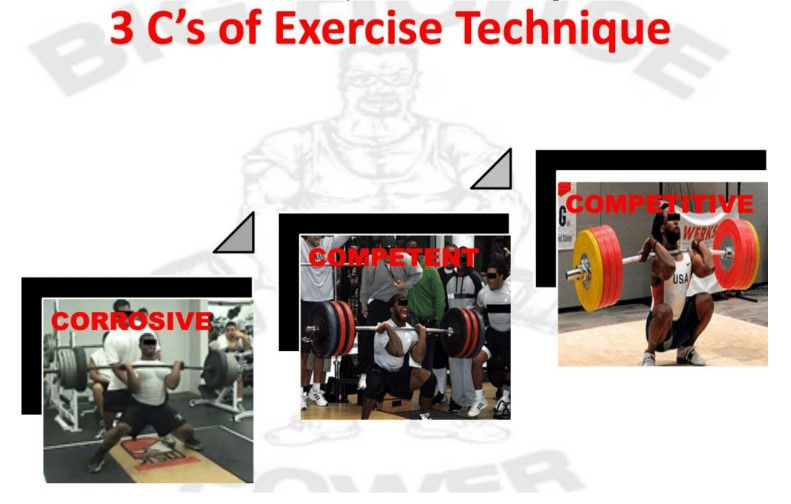3 C’s of Exercise Technique
- Mar 10, 2020
- 3 min read
Updated: Aug 18, 2020
Joe Kenn | Vice President of Education and Performance

Exercise technique and efficiency of proper movement is a critical factor in improving the specific demands placed on an athlete. Regardless of whether it is a squat, biceps curl, or a sprint, proper movement will lead to proper results. Specifically, in regards to the weight room and max effort testing, there has been a lack of reinforcement at times in regards to exercise technique. Many have become infatuated with number chasing on max out day, that has led to an “anything goes” philosophy to achieve higher loads during these sessions.
The first question I would ask is, who benefits from the new records, the athlete or the coach? What is the value of a new max if the technique utilized puts the athlete, (1) in harm’s way, and (2) shows little transfer to movement skills outside the weight room. Secondly, would a sport coach allow for poor technique in a specific skill on the field and if not, why are we accepting of it in the weight room?
With that being said, I have created the 3 C’s of exercise technique mantra to determine what I would classify an exercise movement being performed by and athlete.

Corrosive
This is something we cannot accept in our weight rooms. Corrosive technique is when an exercise is performed in a manner that will only lead to injury and continue to enforce poor movement patterns in the long run. Jumping jack, reverse curl, bounce off the thigh cleans, knee buckling, excessive forward lean squats, and heaving, heavy arching bench presses will all in the long run end in a negative manner and lead to a false sense of strength.
Competent
In an athletic based strength training program, where the sport is priority over the lifting program, this is what I believe all strength and conditioning coaches should strive for at minimum. The athlete’s technique is efficient and the quality of movement reduces the risk of injury when each additional repetition in completed. If our athletes can perform every exercise we prescribe in a competent manner, their KPI’s (key performance indicators) in all metrics will show ample improvement.
Competitive
This rating is specifically based on the proper rules and regulations that are required to complete the competitive movements of the sports of weightlifting and powerlifting. In most athletic based strength programs, variations of these movements are utilized in a large majority of the programs across the globe. I do not believe we need to be excessive in asking our athletes to execute these lifts in the same manner as a competitive lifter does. One reason is the lifts our not our athlete’s priority, they are a supplemental spoke in a wheel that includes numerous other metrics that are needed to perform at a high level. I also believe that the time necessary to perform at this level is never going to supersede their practice schedule for their chosen sport.
I would be remiss to say that during the teaching process, if you have an athlete who can perform these specific movements in a competitive manner, based on natural movement patterns and athleticism, I will never stop this from occurring.

Capable
Another factor we need to address is, is the athlete capable of performing the exercise prescribed? This is primarily for athletes being introduced to handling external loads for the first time in their careers. Has the athlete gone through a proper teaching progression to get them to a point that the exercise prescribed is something they are capable and physically prepared to do. There is no point in having an athlete perform a Back Squat if their body weight squat, or goblet squat is still a work in progress.
Any strength training exercise has an inherit risk. It is our job as coaches to understand the limitations one may have and to establish a layering program (progression) or what some coaches classify as regressions for highly demanding movements to give the athlete the confidence needed to perform the movement in a correct and efficient manner.





Companions in the Zirakpur Call Girls are skilled in presenting themselves in social situations. They enhance occasions, accentuate your self-assurance, and provide joy to regular evenings. Beyond the glitz, their generosity strikes a deep chord with customers. Every interaction provides an opportunity to get to know new people, guaranteeing that friendship always feels sincere, significant, and deserving of being remembered with pleasure.